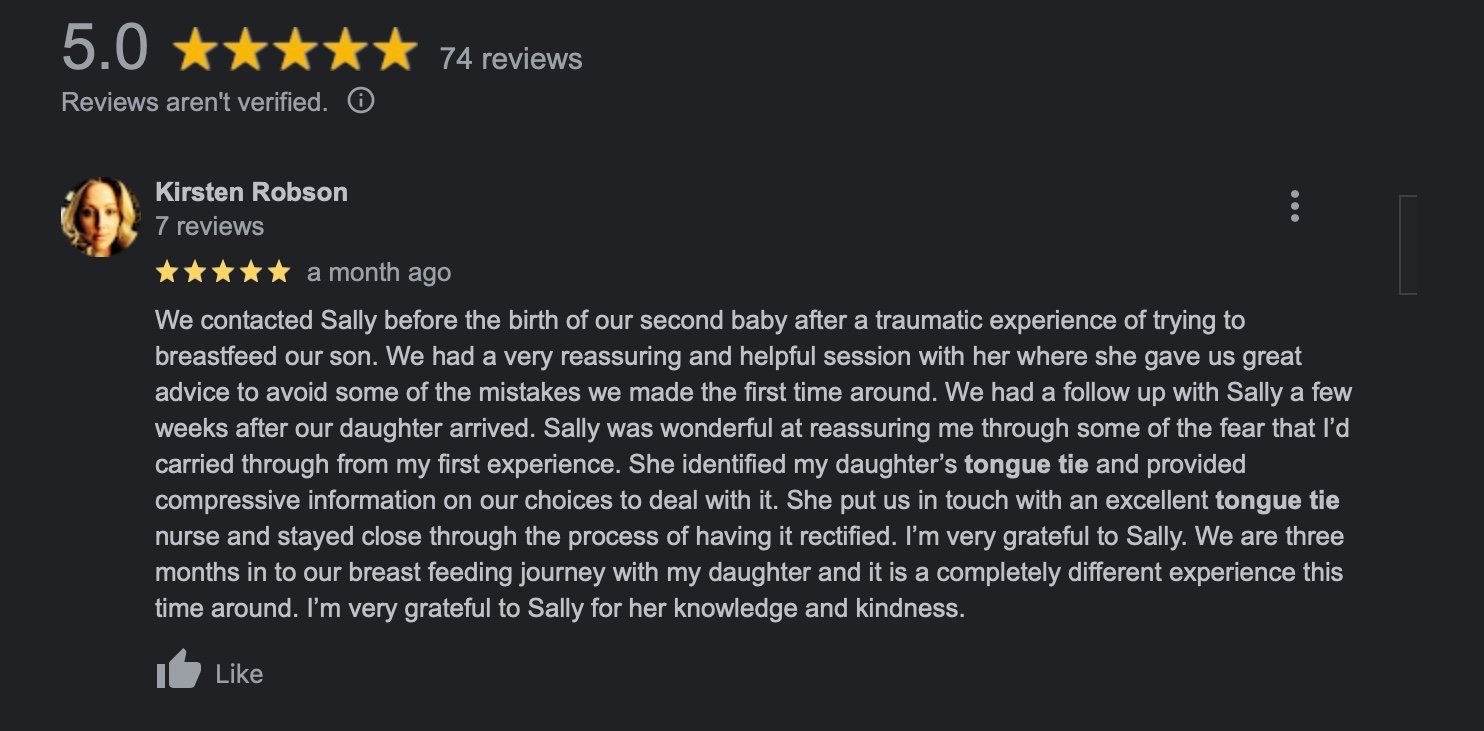How is tongue-tie diagnosed?
What is tongue-tie?
“Tongue-tie occurs when tongue movement is restricted by the presence of a membrane (known as the lingual frenulum) which stretches from the underside of the tongue to the floor of the mouth”.
“Some tongue-ties, known as posterior tongue-ties, can be hidden at the base of the tongue, sometimes under the lining of the mouth, and are easily missed at first glance”(5)
Common signs of tongue-tie are painful feeds despite skilled support, shaped nipples after a feed (chisel or new lipstick shaped) or even a baby who is reluctant to feed or unable to latch.
According to the NICE guidelines, tongue ties can only be diagnosed by healthcare professionals who are also tongue tie practitioners.
However, it’s very common for me to meet families who say a midwife, osteopath, doctor or health visitor has told them their baby is tongue tied (or not tongue-tied) without putting their finger in the baby’s mouth.
I cannot diagnose, but I do assess and refer. To assess for tongue tie properly I discuss with the parents their feeding experience. I also look at the baby closely but most importantly I also encourage the baby to suck my gloved finger and gently feel inside the baby’s mouth. I’m interested to see what movement the baby can achieve with their tongue, how they use their lips an jaw, what suction they can maintain.
How do you test for tongue tie?
“There is no universally agreed way of classifying tongue-tie” -Hazelbacher
I have completed a course on how to use “The Assessment Tool for Lingual Frenulum Function” (ATLFF) developed by Alison Hazelbaker (1993) which looks at the way the tongue cups the finger and the motion of the tongue, as well as how the tongue move within the mouth, including how it moves from side to side, how far the tip of the tongue lifts and how far the baby can poke (extend) the tongue.
Hazelbacher says “The ATLFF™© remains the only valid and reliable tongue-tie screening and assessment tool for infants under six months of age regardless of feeding method”(1)
This tool also assesses tongue appearance. But this is secondary to function as a tongue can look relatively normal but still have deficits in function and be impacting on feeding
What age can tongue tie be diagnosed?
Sometimes there are clear signs of tongue tie in newborn babies, but as Hazelbaker says, the tongue function is more important than appearance. It’s important to spend time assessing what kind of tongue mobility can be achieved, and whether improved positioning and attachment can resolve things.
And What age can tongue tie be treated?
My local NHS tongue tie clinic will treat babies up to 12 weeks old, another one in the next borough will treat up to 6 months old. I have also seen a 7m old having their tongue tie divided. So, it’s a “postcode lottery” and depends upon your practitioner. One consideration is that many policies insist upon anaesthetic after 6m which brings it’s own risks.
If you suspect tongue tie may be a factor in your breastfeeding feeding journey then please do reach out.
If you would like me to assess your baby’s oral function or refer for tongue tie clinic you are welcome to contact me (here).
Sally
REFERENCES:
These two more recent randomised controlled placebo trials found that tongue-tie division was associated with an improvement in breastfeeding:
Berry J, Griffiths M, Westcott C. A double-blind, randomised controlled trial of tongue-tie division and its immediate effect on breastfeeding. Breastfeeding Medicine, 2012, 7: 189-193.
(5)https://www.sarahoakleylactation.co.uk/wp-content/uploads/2014/06/tongue-tie-booklet.pdf
https://www.laleche.org.uk/tongue-tie/
Buryk M, Bloom D, Shope T. Efficacy of neonatal release of ankyloglossia: a randomized trial. Pediatrics, 2011; 128: 280-286.
(1)https://pubmed.ncbi.nlm.nih.gov/16722609/
(2) https://journals.sagepub.com/doi/10.1177/0145561319867666
(3)https://www.ncbi.nlm.nih.gov/pmc/articles/PMC7391099/
(4)https://pubmed.ncbi.nlm.nih.gov/30701608/
http://www.nice.org.uk/nicemedia/live/11180/31409/31409.pdf.
http://www.nice.org.uk/nicemedia/live/11180/31410/31410.pdf


